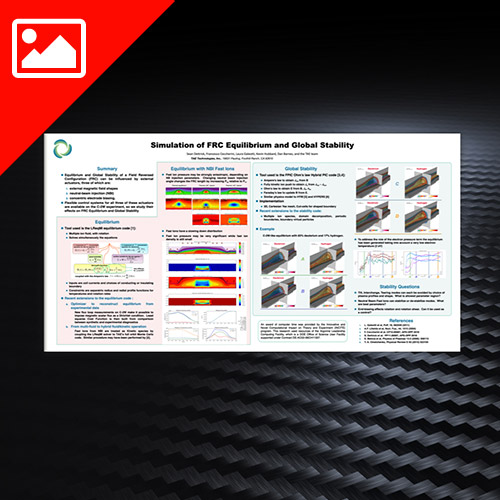
Nov 2018 | Research Library, Posters, Equilibrium, Fusion Energy, Fusion Research, Fusion Science, Fusion Technology, Plasma Research, Simulation, Stability, Theory
October 2018 | S. Dettrick | APS-DPP | Poster
Flexible control systems for all three of these actuators are available on the C-2W experiment, so we study their effects on FRC Equilibrium and Global Stability
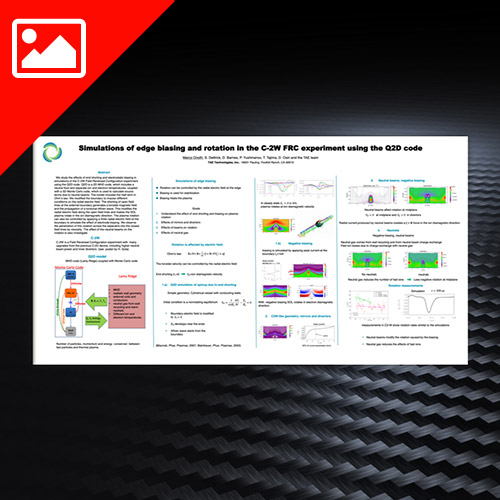
Nov 2018 | Research Library, Posters, Edge Control, Fusion Energy, Fusion Research, Fusion Science, Fusion Technology, Plasma Research, Simulation, Stability
October 2018 | M. Onofri | APS-DPP | Poster
We study the effects of end shorting and electrostatic biasing in simulations of the C-2W Field Reversed Configuration experiment using the Q2D code.
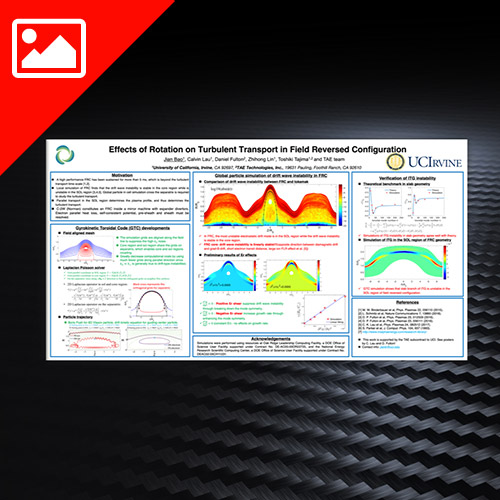
Nov 2018 | Research Library, Posters, Fusion Energy, Fusion Research, Fusion Science, Fusion Technology, Plasma Research, Simulation, Transport
October 2018 | J. Bao | APS-DPP | Poster
Local simulation of FRC finds that the drift wave instability is stable in the core region while is unstable in the SOL region [3,4,5].

Nov 2018 | Research Library, Posters, Equilibrium, Fusion Energy, Fusion Research, Fusion Science, Fusion Technology, Instabilities, Plasma Research, Simulation
October 2018 | F. Ceccherini | APS-DPP | Poster
Tilt instability in FRC plasmas1 is a well-known MHD phenomenon that has been extensively investigated over the years by different authors and an empirical scaling law
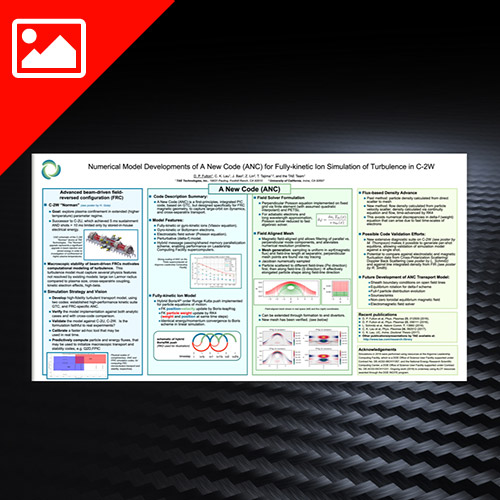
Nov 2018 | Research Library, Posters, Fusion Energy, Fusion Research, Fusion Science, Fusion Technology, Plasma Research, Simulation, Transport, Turbulence
October 2018 | D. Fulton | APS-DPP | Poster
A New Code (ANC) is a first-principles, integrated PIC code, based on GTC, but designed specifically for FRC magnetic geometry
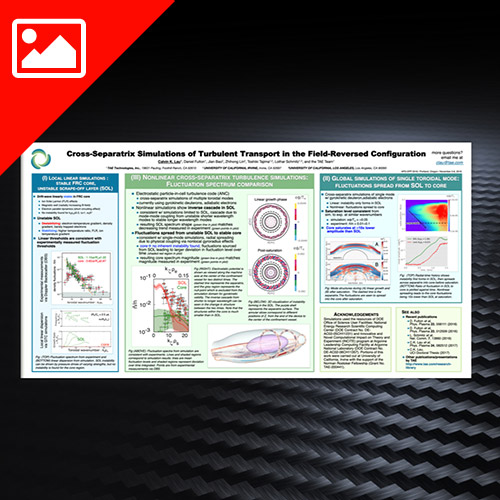
Nov 2018 | Research Library, Posters, Fusion Energy, Fusion Research, Fusion Science, Fusion Technology, Plasma Research, Simulation, Transport, Turbulence
October 2018 | C. Lau | APS-DPP | Poster
Electrostatic particle-in-cell turbulence code (ANC) cross-separatrix simulations of multiple toroidal modes currently using gyrokinetic deuterons, adiabatic electrons





